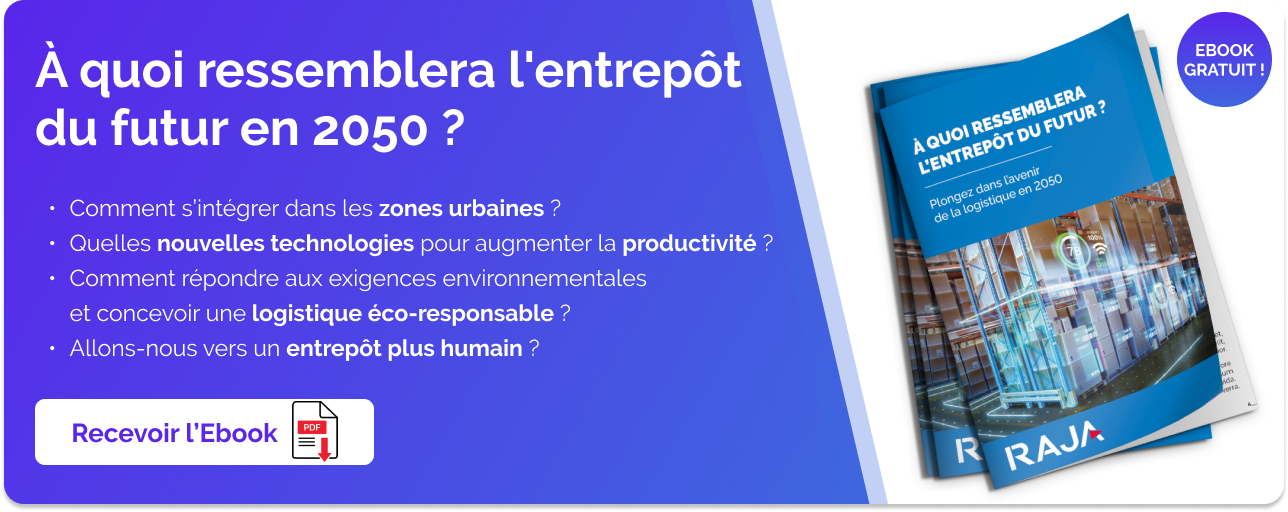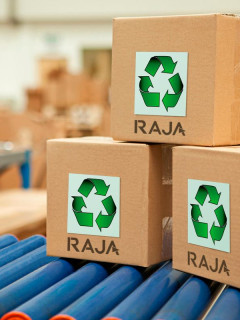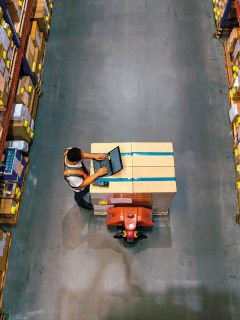You can’t escape the ChatGPT trend.
This new technology has been creating a buzz all last year, and we continue to see professionals from all sectors amazed by its revolutionary uses.
But what are the real uses of ChatGPT in the supply chain ?
That’s the question addressed in this article, in which you’ll discover how this Artificial Intelligence works, the benefits and the points to watch out for when applying it to the world of logistics.
What is ChatGPT?
ChatGPT is a conversational Artificial Intelligence created by OpenAI, a company founded by Elon Musk, the founder of Tesla.
It is a chatbot based on an LLM (Large Language Model) capable of predicting the words to answer a user’s questions, according to a given context.
In concrete terms: on ChatGPT, a user asks a question to the AI, which then searches the huge database at its disposal for the most relevant answer possible.
In this way, ChatGPT simplifies and empowers a large number of processes: text creation, spelling and syntax correction, segmentation of large databases, creative ideation, etc.
ChatGPT is already proving its worth in the marketing, sales and information sectors. But what about the world of logistics and the supply chain?
What uses does ChatGPT have in the supply chain?
On the transport and logistics side, some consultants and experts are beginning to analyse the uses of ChatGPT, and its benefits for warehouses. Here are just a few of them.
Making logistics predictions
Using a large amount of data, ChatGPT is capable of making probabilities, which can lead to logistics predictions that you can then apply to your supply chain management.
It will analyse a large set of data to identify patterns and trends, and draw up best practices – in terms of stock management or replenishment.
For example, ChatGPT can be used to analyse your customers’ expectations at a given moment (using data from exchanges with customers across all the company’s channels, and past logistics data). This data, linked to customer expectations, can then feed into your supply strategy and make your company more competitive.
Another example: why not ask ChatGPT to monitor all possible sources of risk for a supplier, to avoid disruption to your supply chain as far as possible?
Automate negotiations with suppliers
Negotiating with suppliers and logistics service providers is a time-consuming operational task for the supply chain manager. Applying ChatGPT to the world of logistics could well revolutionise this process, by automating the sourcing of your products via an intelligent chatbot.
This is what the American retail giant Walmart is already testing in the United States and Canada. After entering data into ChatGPT about its budget and criteria (discounts, payment times, etc.), the company lets the chatbot compare a supplier’s requests with trends, commodity values and competitors’ costs.
ChatGPT then automatically initiates conversations with suppliers and generates commercial offers and contracts. According to Walmart, Artificial Intelligence can close a deal with a supplier in a matter of days, compared with weeks or months via a ‘traditional’ conversation. What’s more, Walmart claims that three out of four suppliers prefer to negotiate with an AI rather than a human.
All of which means you can save on human resources, and gain in time and efficiency.
Configure your software in an automated and personalised way
If your Artificial Intelligence knows all the configuration options of the software you use, it can create specific settings based on the requests you make.
For example, you could use ChatGPT as an overlay on your Warehouse Management System (WMS), but also on your logistics robots, to configure them for the specific tasks you want to perform.
For example, you could ask ChatGPT to design a logistics dashboard that brings together all your global logistics data, combining your e-commerce and mass distribution activities. You could then ask it to segment the different supply channels according to their capacity.
ChatGPT for the supply chain makes it possible to envisage a more data-based, more rational logistics management.
Analyse data from your information system
Positioned as an interface with your WMS or ERP, ChatGPT can extract easily exploitable best practices from your significant mass of data.
In particular, you could ask it to :
- Who is the best picker in the warehouse today?
- Which operator should I assign to which part of the order picking chain to improve efficiency?
- How can I organise team planning to optimise physical flows in the warehouse, given current customer demand?
Improve knowledge of your internal procedures
Finally, ChatGPT could take over from your logistics managers at certain times when it comes to knowledge of the procedures to be followed in the warehouse.
In this way, operators could ask the AI questions so that it can search the knowledge base and help solve a complex problem that would previously have required the manager’s intervention.
What are the limits of ChatGPT for logistics?
While ChatGPT seems to offer a wealth of opportunities for the logistics function, we need to look at the points to watch out for when using this technology.
First of all, it should be noted that the language models used by generative AI are based on probabilities and biases, and not on a detailed understanding of your supply chain management. As a result, ChatGPT can potentially ‘invent’ answers based on false information, and contradict itself over time.
Hence the need to be able to ‘feed’ ChatGPT with reliable, well-structured data beforehand. If you decide to implement ChatGPT as part of your logistics strategy, you also need to ensure that you always have a human being in place to control the machine and check the results generated.
Finally, one of the major fears of supply chain players lies in the potential of ChatGPT to replace a large number of human jobs with AI. In the face of this fear, it is important to remember that most new technologies have first eliminated jobs, only to create new ones, linked to changes in internal processes.
In our guide “The Warehouse of the Future”, Adrien Soulier, Managing Director of WIIO, made the following prediction:
“We are going to see a migration from physical power to intellectual power, particularly in terms of logistics processes and methods. All the heavy and tedious tasks will be entrusted to robots – and every human will be asked to provide real added value, where the human brain is a plus compared with Artificial Intelligence.”
Should you use ChatGPT in your supply chain?
ChatGPT is a relatively new technology with a lot of buzz – but is it really useful and necessary for your warehouse?
To answer that question, you need to ask yourself a few more:
- How could it be used in your supply chain?
- What return on investment can you expect?
- What skills do you need to develop intern ally to master this technology (data management and prompt engineering, for example)?
- How can you put in place management and a culture of change in your teams linked to this technology?
For many logistics centres, Artificial Intelligence is currently not mature enough to be implemented in their processes – unless it is already implemented in the mature technologies you use. For example, some robotics software already incorporates a layer of AI, based on machine learning (i.e. the fact that robots continuously learn and improve their processes based on data).
But AI is still in its infancy, and we are likely to see the emergence of new applications that we never imagined. Watch this space closely!
















